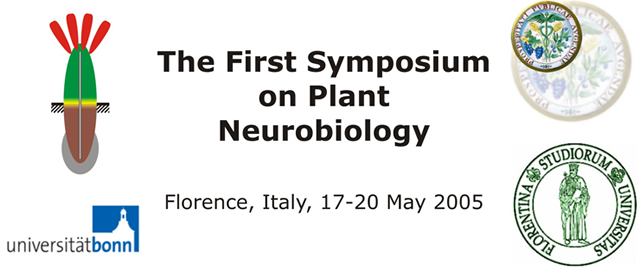
 |
| Action potentials - from mechanism to function |
| Kazimierz Trebacz |
| Department of Biophysics, Institute of Biology, Maria Curie-Sklodowska University, Akademicka 19, PL-20-033 Lublin, Poland |
| *email: trebacz@biotop.umcs.lublin.pl |
|
Action potentials (APs) can be evoked in plants by damaging and non
damaging stimuli. After application of damaging stimuli, such as wounding or burning either series of APs or
APs superimposed with variation potentials are registered. Non damaging stimuli, like illumination, cooling or
direct current lead usually to generation of single AP. An important feature of APs is their ability to spread
from the site of stimulation throughout the whole plant, specialized tissue or plant organ. Local circuits
consisting of ion fluxes play important role in AP transmission and synchronization of plant response to
remote stimuli. It is thus important to determine the ion mechanism of APs. It was first elaborated for giant characean cells. Later on, basic aspects of the mechanism were confirmed and modified using another model plant - the liverwort Conocephalum conicum. C. conicum belongs to phylogenically oldest terrestrial plants. Its thallus forms nearly homogenous network of cells connected with plasmodesmata. All cells of the thallus (including rhizoids) are excitable. Basing on experiments with application of ion-selective microelectrodes, and ion channel inhibitors one can conclude that the ion mechanism of APs in Conocephalum consists of the following steps. AP is initiated by Ca2+ influx into the cytosol. Increasing [Ca2+] cyt activates anion channels, and Cl - efflux leads to cell depolarization. Repolarization occurs as a result of K+ efflux and enhanced H+ extrusion through the electrogenic proton pump. Simultaneous application of anion- (A-9-C) and potassium channel inhibitors (TEA) allowed to separate a calcium phase of AP, called VT, and address the question concerning the source of calcium ions entering the cytosol. Substances responsible for Ca2+ liberation from internal stores (Sr2+) caused an increase, whereas chemicals blocking internal Ca2+ channels (neomycin) suppressed the calcium phase of AP. Partial inhibition of VT was also observed after application of impermeable Ca2+ channel inhibitors affecting Ca2+ influx through the plasmalemma. It was concluded that APs in Conocephalum are initiated by Ca2+ influx through the plasma membrane which then causes liberation of additional portion of Ca2+ ions according to the process known as calcium induced calcium release. The extent of [Ca2+] cyt increase determines the physiological response. It was demonstrated that in Conocephalum the rate of respiration increases up to twice after passing of AP evoked by non damaging electrical stimuli. Severe stimuli, like cutting of the thallus edge, evoked series of APs followed by shifted in phase oscillations in the rate of respiration. After blocking of AP with ion channel inhibitors, no significant increase in the respiration rate was observed irrespectively of the kind of stimulus. Significant increase in peroxidase activity is another consequence of excitation in C. conicum. It was registered only if the threshold of excitation was exceeded. Here again Ca2+ ions seem to play a role of coupling factors between AP and the physiological response. Different physiological responses evoked as a consequence of plant excitation are consistent with the concept of “calcium signature”. |
| [Back] |
Last Update on 06-06-05 by Andrej |
|